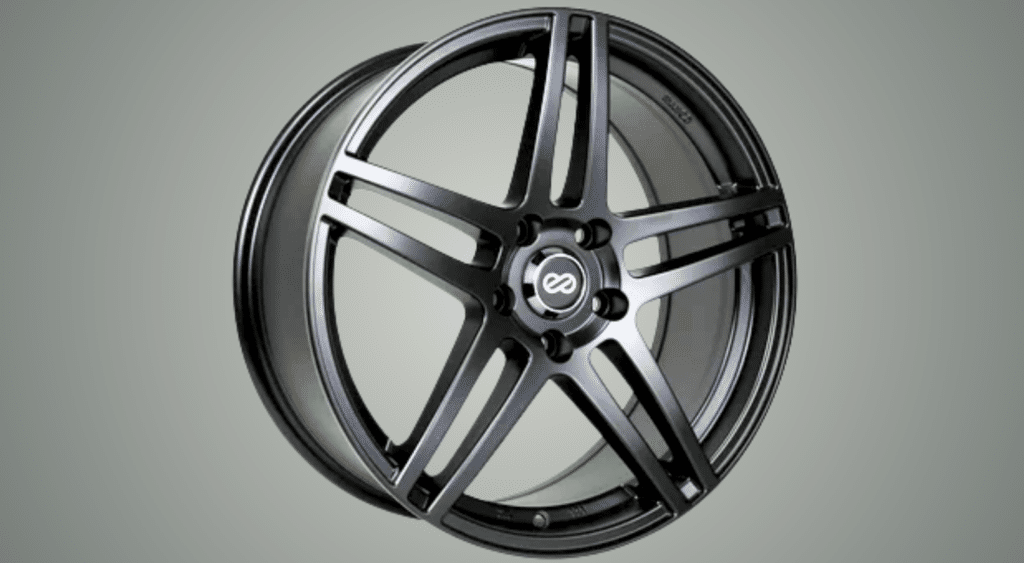Wheel bolt patterns might seem like a small detail on your Subaru.
But they matter a lot. I learned this when I tried to get new wheels for my Impreza.
Each Subaru has a specific way in which its wheels attach to the car. It’s like a fingerprint – unique and important.
The bolt pattern affects how well your car stays on the road. It keeps your wheels firmly in place.
This is extra important for Subarus since they’re known for handling all types of roads and weather.
When you want to change your Subaru’s wheels, knowing the right bolt pattern saves you time and money.
It also keeps you safe on your daily drives.
What is the Bolt Pattern for a Subaru?
Let me explain bolt patterns in simple terms.
When I check my Subaru’s wheels, I see a circle of holes where the wheel connects to the car. These are called lug holes.
The bolt pattern tells us two things: how many holes there are and how big the circle is.
Most Subaru cars use either a 5×100 or 5×114.3 pattern. The first number, ‘5,’ means five lug holes.
The second number (100 or 114.3) shows how wide the circle is in millimeters.
I measured my 2012 Impreza, and it has the 5×100 pattern, while my friend’s newer WRX uses the 5×114.3 setup.
Understanding Subaru Bolt Patterns and Their Compatibility

I’ve learned that Subaru chooses its bolt patterns carefully. These patterns do more than just hold wheels in place.
They help keep the car stable when I’m driving through rain or snow. The five-lug design makes sure the wheel’s weight spreads out evenly.
This matters even more because Subarus has all-wheel drive. The right bolt pattern helps each wheel grip the road properly.
When I’m turning corners or driving on wet roads, these patterns work with the all-wheel drive to keep my car steady.
That’s why using the correct pattern when changing wheels is so important.
List of the Correct Bolt Pattern for a Different Subaru Model
| Subaru Model | Years | Bolt Pattern | Notes |
|---|---|---|---|
| Ascent | 2019 – Present | 5×114.3 mm | All trims have the same pattern |
| BRZ | 2012 – Present | 5×100 mm | No pattern changes across years |
| Crosstrek | 2013 – 2023 | 5×100 mm | Original model to GT Facelift |
| Crosstrek | 2022 – Present | 5×114.3 mm | New GU model only |
| Forester | 1997 – 2022 | 5×100 mm | SF, SG, SH, SJ models |
| Forester | 2018 – Present | 5×114.3 mm | SK models and newer |
| Impreza | 1992 – 2022 | 5×100 mm | All G1 to G5 models |
| Impreza | 2023 – Present | 5×114.3 mm | New GU model |
| Legacy | 1989 – 2014 | 5×100 mm | All early generations |
| Legacy | 2015 – Present | 5×114.3 mm | All new models |
| Outback | 1995 – 2014 | 5×100 mm | All early generations |
| Outback | 2014 – Present | 5×114.3 mm | All new models |
| WRX/STI | 2015 – Present | 5×114.3 mm | All new models |
How to Identify the Correct Bolt Pattern for a Specific Subaru Model
Even though many Subaru models share similar setups, small differences can lead to poor fitment or safety issues. Follow these steps to accurately identify your bolt pattern.
Step 1: Park Your Car on Flat Ground
Begin by parking your Subaru on a level surface, like a driveway or garage floor. Avoid sloped areas or uneven terrain, as this can throw off your perspective when measuring.
A flat surface ensures the vehicle is stable, making it safer for you to inspect and measure the wheels without unexpected movements.
If you’re jacking up the car or removing a wheel to measure, always use jack stands and engage the parking brake.
Step 2: Grab a Measuring Tape
A flexible measuring tape or a digital caliper is needed for this step. Avoid using a ruler or anything rigid that won’t bend between holes.
If available, metric measurements are usually more precise for bolt patterns, but inches can work too. Keep a pen and notepad handy so you can record the measurements and compare them later with official specs.
Step 3: Measure Between Opposite Lug Holes
This is the most important part. First, count how many lug nuts or bolt holes your Subaru has; most have five. For a 5-lug wheel, measuring directly across is tricky since no lug sits exactly opposite another.
Instead, measure from the center of one lug hole to the outer edge of the furthest lug hole. This indirect measurement will give you the bolt circle diameter.
And for 4-, 6-, or 8-lug wheels, you can measure center to center of opposing holes, which is more straightforward.
Step 4: Double-Check with Your Trunk Mat Sticker
Subaru often places a specification label under the trunk mat, in the spare tire compartment, or inside the driver-side door jamb. This label provides important data like tire size, wheel dimensions, and sometimes the bolt pattern.
If you find this sticker, it’s a great shortcut to verify your bolt pattern without relying solely on manual measurements.
Step 5: Compare with Your Manual
Consult your owner’s manual and locate the wheel or tire specification section. Here, you’ll typically find details such as lug nut count, bolt circle diameter, recommended wheel size, offset, and center bore (which affects fitment).
This factory-provided information ensures accuracy, especially if your car hasn’t had any previous wheel modifications.
Step 6: Measure Twice
Always measure more than once to confirm accuracy. Bolt pattern errors can lead to wheels that don’t mount properly, risking damage to your studs or poor handling on the road.
It’s worth taking the time to re-check both the number of lugs and your measurements to avoid costly mistakes.
If possible, get a second opinion from a local mechanic or tire shop. Many offer free consultations for fitment questions.
Tips for Finding Your Subaru’s Bolt Pattern:
- Look at your car’s build date sticker (usually on the driver’s side door frame)
- Check your owner’s manual in the wheel specifications section
- Take a photo of your current wheel setup before removing anything
- Use a bolt pattern gauge tool for the most accurate measurement
- Write down both millimeter and inch measurements
- Compare your findings with official Subaru charts
- Ask your local tire shop to confirm your measurements
- Keep a record of your bolt pattern for future reference
Safety Note: Getting the wrong bolt pattern can lead to loose wheels and accidents. I always verify my measurements before buying new wheels. When in doubt, I talk to a professional who knows Subarus.
Comparisons between Subaru’s and other brands’ bolt patterns
| Brand | Common Bolt Patterns | Popular Models Using This Pattern | Compatible With Subaru? |
|---|---|---|---|
| Toyota | 5×114.3 mm | Camry, RAV4, Avalon | Yes (newer Subarus) |
| 5×100 mm | Older Celica | Yes (older Subarus) | |
| Honda | 5×114.3 mm | Accord, Civic Si, Pilot | Yes (newer Subarus) |
| 4×100 mm | Older Civic, Fit | No | |
| Ford | 5×114.3 mm | Mustang, Explorer | Yes (newer Subarus) |
| 5×108 mm | Focus, Fiesta | No | |
| Volkswagen | 5×100 mm | Golf, Jetta (older) | Yes (older Subarus) |
| 5×112 mm | Newer Passat, Golf R | No | |
| Mazda | 5×114.3 mm | Mazda3, Mazda6, CX-5 | Yes (newer Subarus) |
| Hyundai | 5×114.3 mm | Sonata, Tucson | Yes (newer Subarus) |
How to Maintain Bolt Patterns on Your Subaru
I check my Subaru’s wheel bolts once a month. When I hear odd noises, I look at the bolts first. Loose bolts can ruin wheel holes.
I use a wire brush to keep the threads clean. During tire rotations, I check for wear signs.
If I see cracks or odd shapes, I visit my mechanic right away. I always use a torque wrench to get the right tightness.
My mechanic told me that the wrong bolt pressure can warp wheels over time.
Using the right tools has kept my wheels in good shape for years.
It’s better to spend time on checks than deal with wheel problems later.
Tools For Safe Bolt Maintenance:
- Torque wrench
- Wire brush
- Socket set
- Small flashlight
- Thread checker
- Clean rags
Conclusion
Now you know why bolt patterns matter on your Subaru. They’re not just holes in your wheels – they keep you safe.
I wrote this guide to share what I learned from my own wheel problems. The right bolt pattern means better rides and fewer shop visits.
Keep this guide handy when you shop for new wheels. Check those bolts monthly. Clean them well. Keep them tight.
These simple steps make a big difference. Your Subaru deserves this basic care.
Stay safe, and enjoy the ride with the right bolt pattern.


